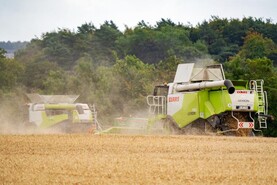COVID-19 vaccine manufacturer AstraZeneca is set to build an anaerobic digestion (AD) plant to produce biomethane to provide heat and power for its UK sites.
The company has partnered with Future Biogas to build the plant in East Anglia, where the biomethane will be injected into the national gas grid.
Future Biogas is one of the UK’s largest biogas producers, which currently operates 10 biogas plants.
The biomethane will be used as a substitute for natural gas to provide a renewable source of heat and power at its UK sites in Macclesfield, Cambridge, Speke and Luton.
Transitioning to 100% renewable energy for heat and power is central to AstraZeneca’s commitment to be zero carbon across its operations by the end of 2025 and carbon negative by 2030.
Alongside clean heat and power, to achieve its net zero goal, AstraZeneca will transition to 100% electric vehicles and 100% renewable electricity.
Feedstock
The new plant will have the capacity to provide up to 125 gigawatt hours (GWh) of biomethane, equivalent to the energy demand to heat over 9,000 homes.
To put this in contact, a typical farm-sized plant in Ireland will be around 20 GWh in capacity. Construction will begin in 2023.
This new plant will use crops grown locally to the site. The company says that adding feedstocks grown for AD into the rotation offers farmers more diverse cropping opportunities, which enhances the sustainability of the farming sector.
Crops will be grown with “regenerative agriculture practices”, promoting nutrient cycling through wider cropping rotations, minimising soil disturbance to limit carbon release from soils and helping to build soil organic matter and soil health, the company says.
Carbon capture
Through the partnership with Future Biogas, AstraZeneca will access carbon capture and storage (BECCS) technology through the Northern Lights partnership in Norway, a joint venture supported by the Norwegian government.
Carbon dioxide generated by the plant will be captured and transported to the Northern Lights storage facility, where it will be permanently sequestered 2.6km under the seabed. The company says that, as a result, its plant has the potential to be not just net zero, but net negative.






 This is a subscriber-only article
This is a subscriber-only article










SHARING OPTIONS: